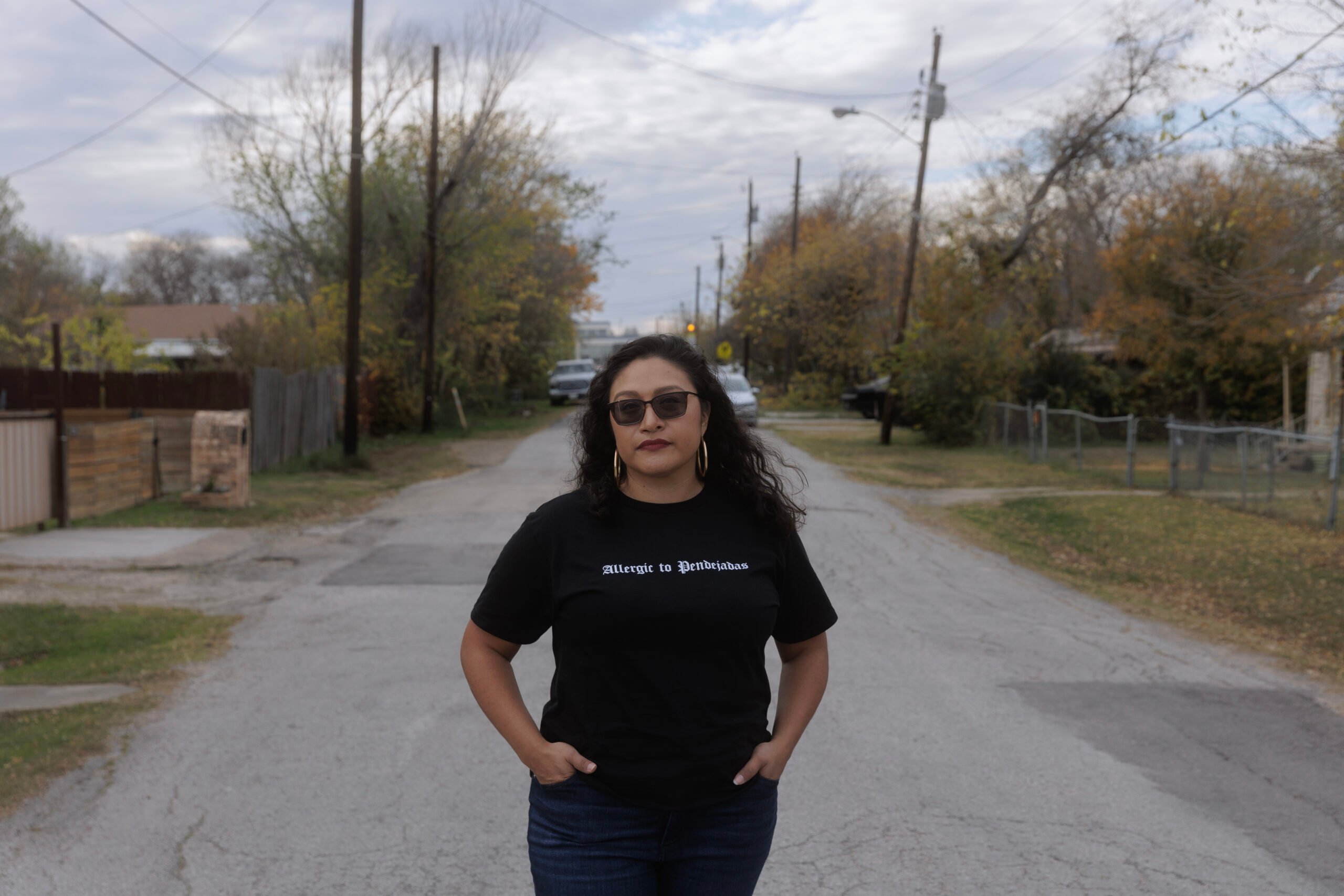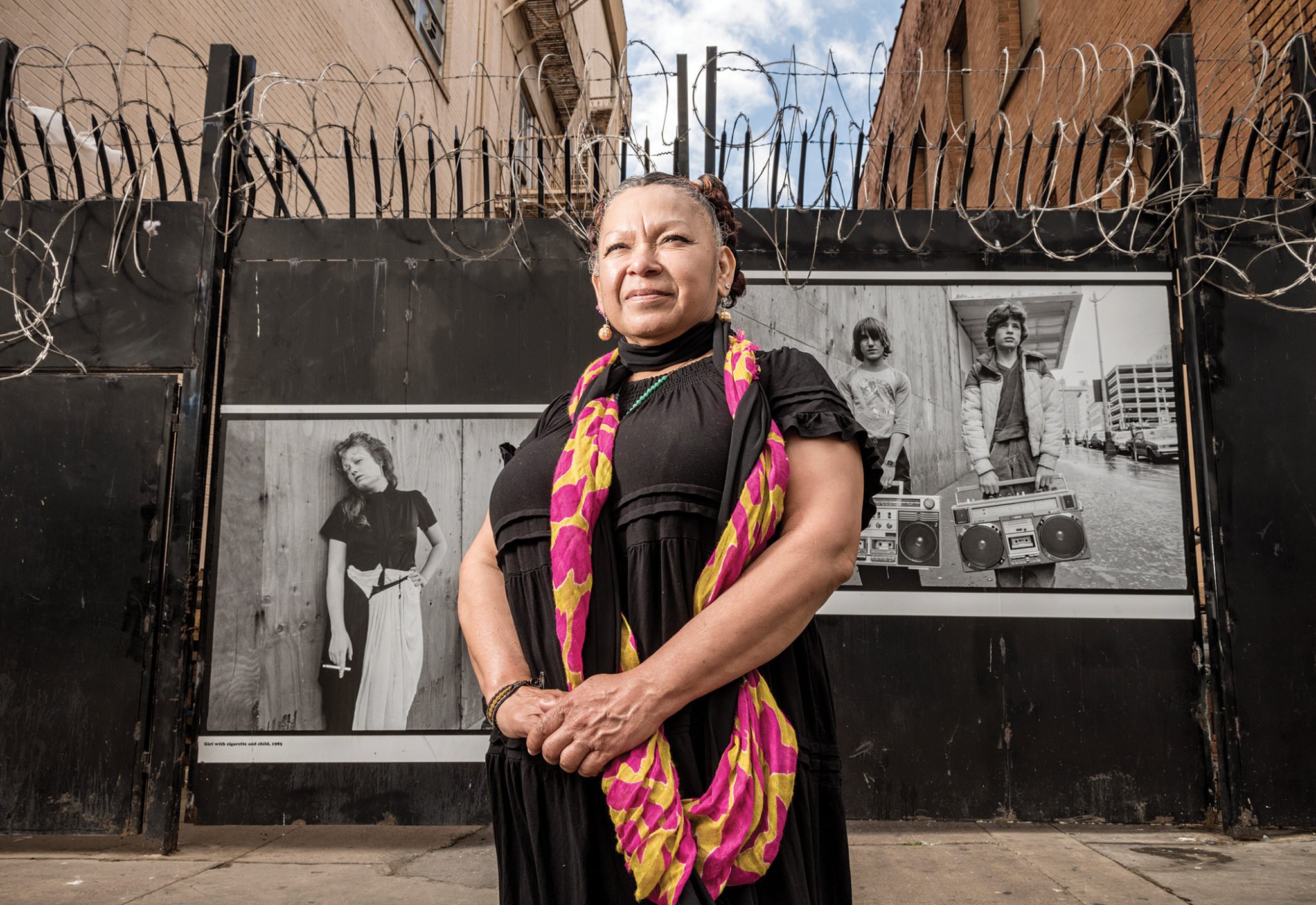
Homeward Bound
The first-of-its-kind Museum of Street Culture challenges art-world norms by employing homeless docents and displaying art on the street.
A version of this story ran in the June 2018 issue.
The first-of-its-kind Museum of Street Culture challenges art-world norms by employing homeless docents and displaying art on the street.
–
by Michael Hoinski
@michaelhoinski
July 16, 2018
It takes thick skin and a generous spirit to appreciate the Museum of Street Culture. When I visited on a sunny April morning, I was on display to a group of homeless people who stared at me as I observed the art. The homeless sat on the sidewalk right in front of me, their backs slumped against the walls on which were mounted the photographs I was there to see. I felt the urge to look down and make eye contact, but resisted, afraid I wouldn’t know what to do with the looks that would be returned. Instead, I stayed fixed on the photos — black-and-whites of homeless people — and considered how they mirrored the environment in which they were presented.
Several dozen homeless people milled about on Park Avenue, a depressed pocket in the quickly gentrifying southwest quadrant of downtown Dallas. On one side of the street is the Stewpot, a homeless resource center known nationally for its art program. On the other side is 508 Park, a partially restored Art Deco building where fabled blues musician Robert Johnson once recorded. The exterior walls of these two buildings are plastered with images by the renowned photographer Mary Ellen Mark as part of the museum’s inaugural exhibit, “Looking for Home: A Yearlong Focus on the Work of Mary Ellen Mark.” It’s centered on Erin Blackwell, or “Tiny,” a Seattle runaway whom Mark chronicled for more than 30 years. The show will continue through the end of the year, and in September there will be a screening of the documentary TINY: The Life of Erin Blackwell, directed by Mark’s husband, Martin Bell, with Tiny in attendance.
The Museum of Street Culture aims to “validate the history and everyday experience of people in public places,” according to its mission statement. The museum will trace a history starting in the 15th century, with scenes of peasant life; continuing to the tramp and hobo culture of the early 20th century, when the itinerant lifestyle was romanticized; and finally arriving at contemporary street life. Founding director Alan Govenar imagines a museum that isn’t just about homelessness. He describes it as a place where people from all walks of life will come together.
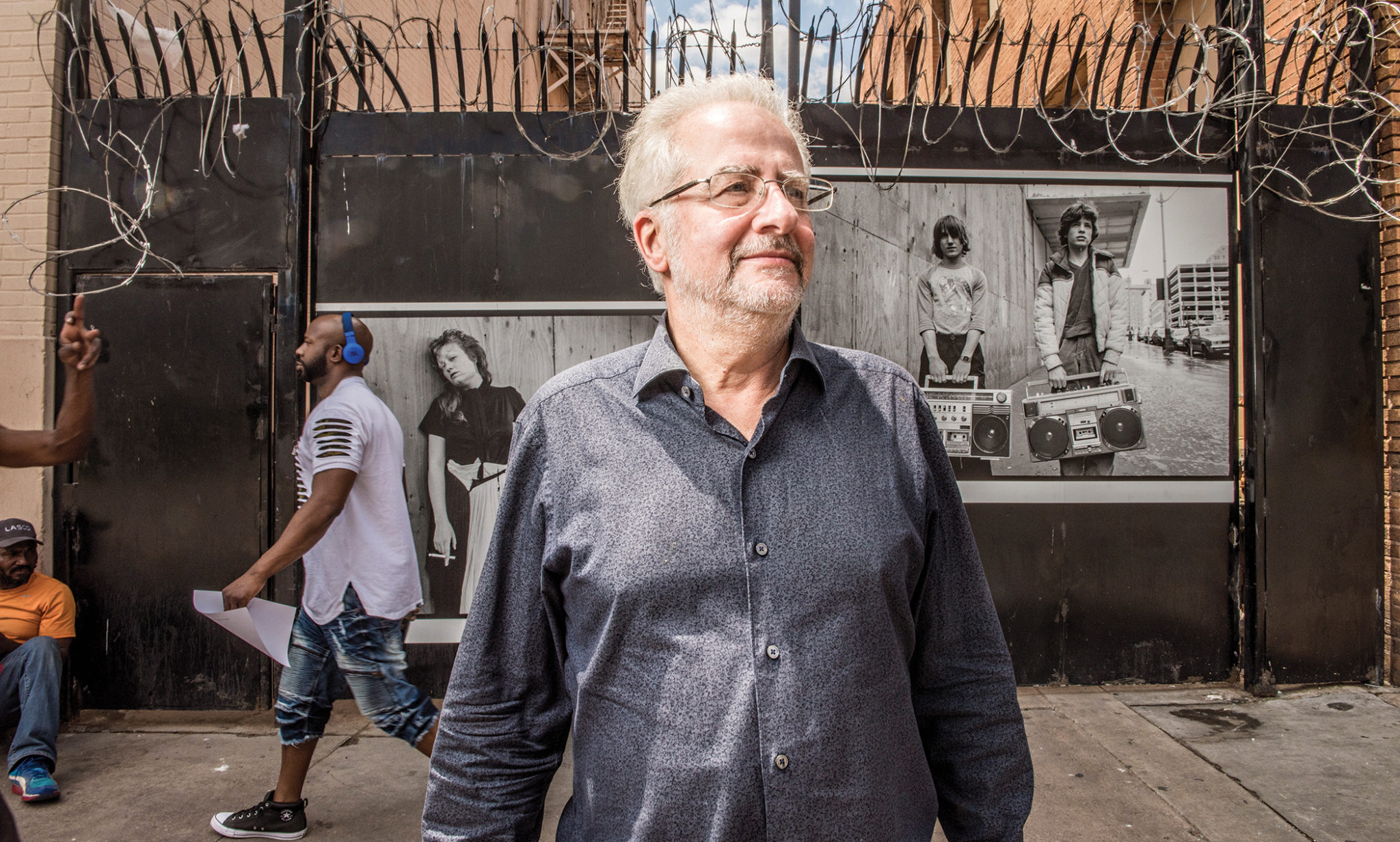
“The street is a great equalizer,” Govenar said. “It’s where the haves and the have-nots are side by side. And we want, with this museum, to emphasize our shared human experience.”
The museum opened in October, but is itself still without a home, borrowing facilities from programming partners until funds can be raised for a permanent space. For the Mark show, the streets would suffice, at least for part of the exhibit. The rest of the photos reside inside the Stewpot. Homeless people are paid $10 per hour to train and work as docents, conducting tours of the exhibit Monday, Wednesday and Friday, noon to 1 p.m. only.
On the day I visited, Misty (not her real name) was the docent on duty. Middle-aged and with a cheery disposition, she wore a neat skirt and top. She greeted me, the only person to take the tour that day, and immediately started providing context for the exhibit. Misty explained that in 1983, Mark and the writer Cheryl McCall published a photo essay in Life magazine documenting an extended family of young runaways. The piece drew national attention to the burgeoning problem of youth homelessness.
Mark and McCall’s window into this world was Erin “Tiny” Blackwell. Mark continued photographing Tiny until 2014, a year before Mark’s death, chronicling her journey from a teenage junkie to a grown woman who had finally found solace in a home and her 10 children.
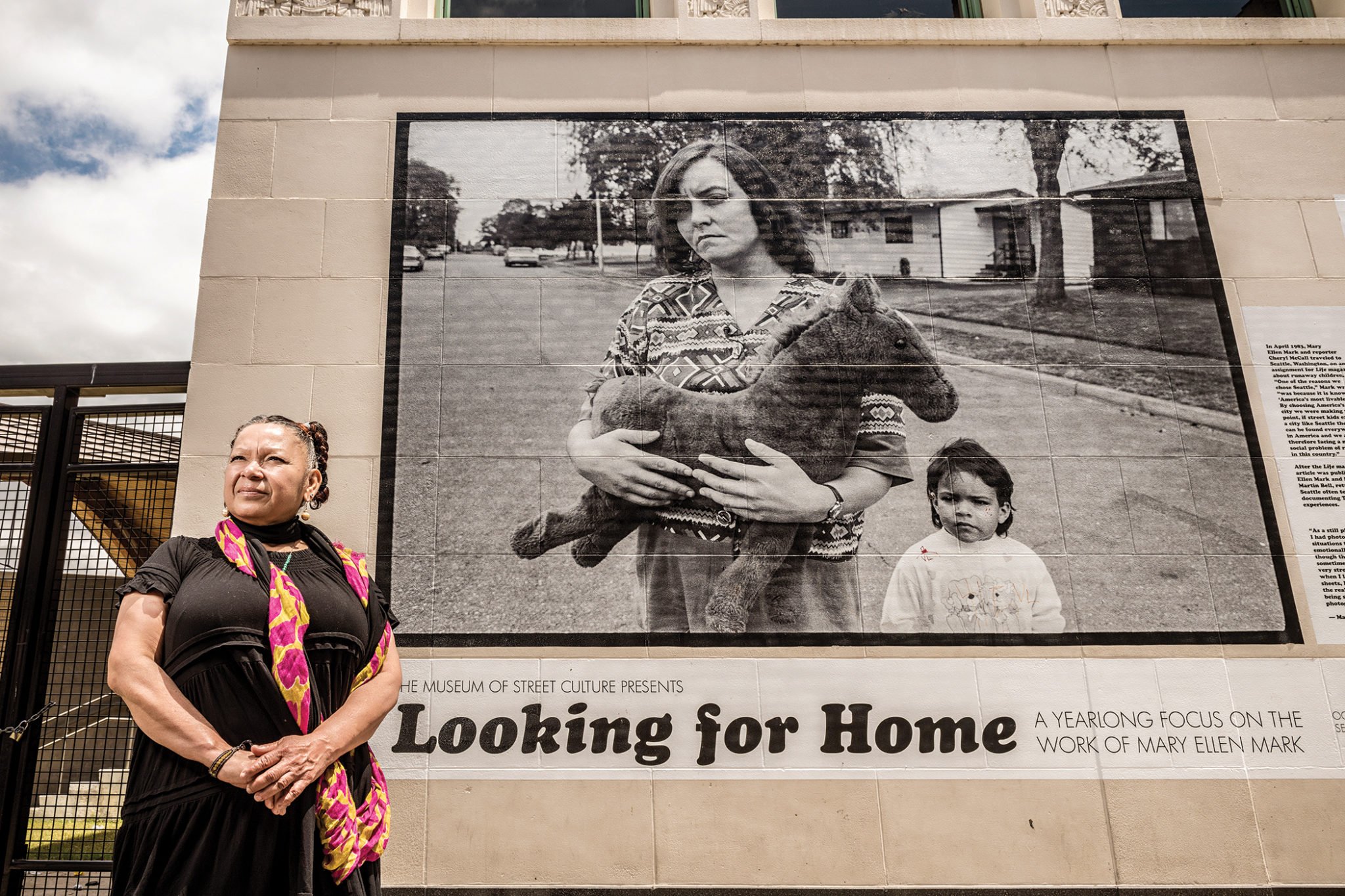
“Let me start with this picture,” Misty said, pointing to the lone photograph in the lobby, an 8-by-10-inch portrait of Tiny wearing a pillbox hat with a veil. “How old do you think she is?”
“Hmm. Early 20s?”
“Well, close, but not really,” Misty said. “She was 13 years old. She was dressed up for Halloween like a French prostitute, because at that time she already was into that. She’s 13 years old, she’s just run away, she’s like, ‘OK, I’m going to be better off on the streets. I’ve got nothing else to lose.’ She had already lost everything.”
We were joined by Vickie Gies, another docent, who had been asked to shadow our tour. Gies chimed in frequently and carried a bag with copies of Street Zine, the Stewpot newspaper she’s worked on for about a decade. She’s been coming to the Stewpot on and off for 20 years. Gies and her husband were off the streets for seven years. Then he lost his job and they lost their apartment. The couple took to camping near White Rock Lake until all of their possessions washed away in Hurricane Harvey’s rains last year. Since then they’ve been staying at a friend’s place. Earlier in the day, Gies’ husband, who has lung cancer, won his disability hearing. She was riding high about the prospect of finding them a new place to call home.
The docents are tasked not just with presenting the photos, but with starting a dialogue about the interplay between the arts and social change. “We make good tour guides because we’ve been out there; we’ve seen what Tiny went through,” Gies said. “Me and my husband were honored to be asked to do this, and I feel like as much as I’ve given tours, I know her personally. I can’t wait to meet her, because I feel like she’s a sister.”
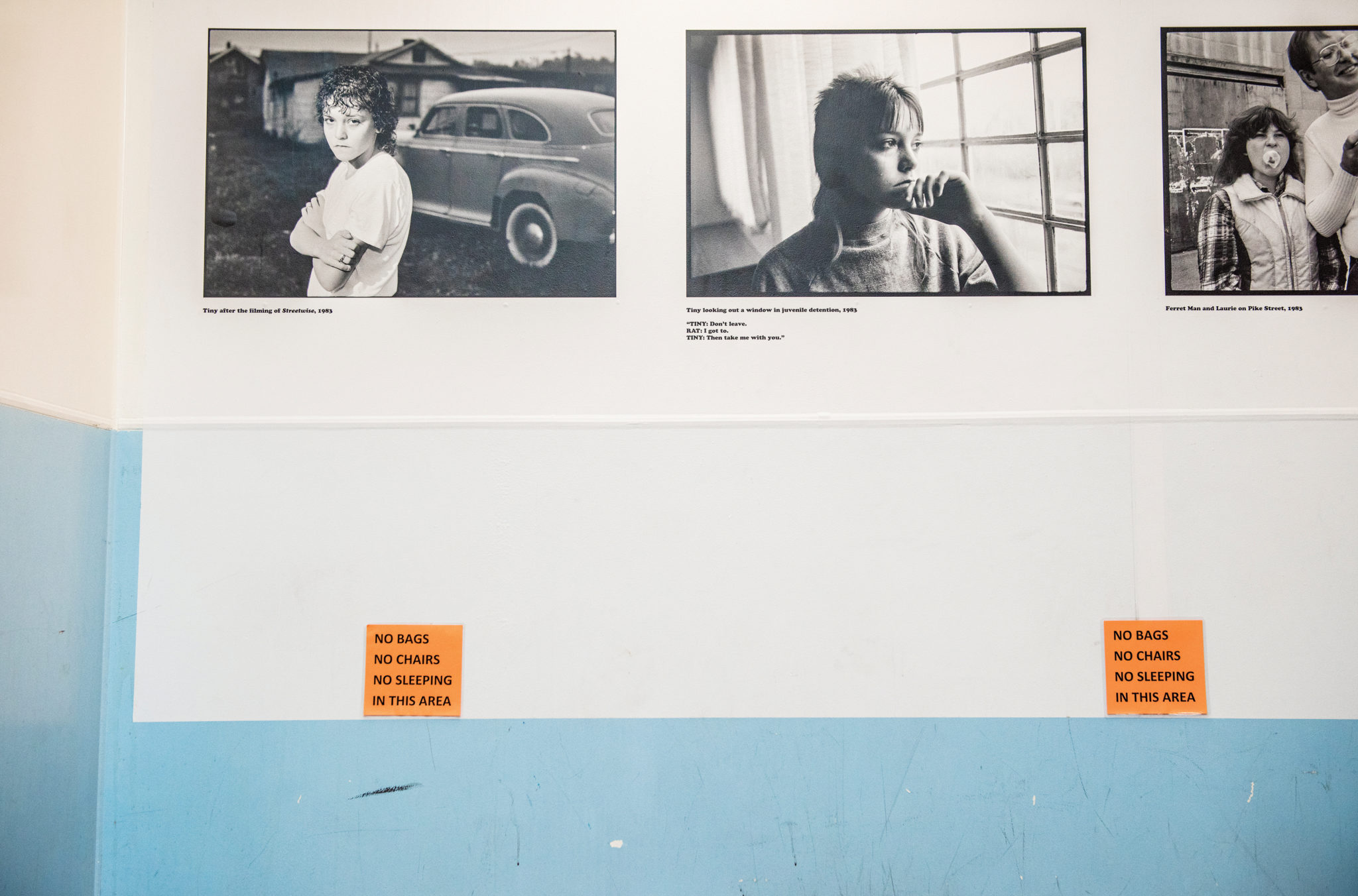
The three of us stood in front of a photograph taken in 2014. Tiny is shown holding her two Chihuahuas, Bean and Khloe, her eyes closed in sweet bliss. Misty asked me to describe the look on Tiny’s face. “Love,” I said. Then Misty instructed me to close my eyes.
“Now place yourself in that picture,” Misty said. “What is it about her that gets you the most?”
Though I felt silly, I humored Misty, knowing she wanted to challenge me. She asked me if I had a dog as a child. She asked me to describe the feeling of holding my dog. She asked me to think about my daughter and explain what it’s like to hold her.
“What would it be like if you wouldn’t be able to hold your daughter?” Misty asked.
I had to catch my breath.
“Now open your eyes,” she said. “Do you think when Tiny opened her eyes after that photo was taken, she was afraid of losing everything again? Would you be afraid of losing what you have?”
We are conditioned to give to the homeless. Here Misty was doing the giving.
“This is part of developing social skills, and that’s why I like it,” Misty said of her job. “It’s about the impact that I make on people. That really counts.”
–
Since the Museum of Street Culture’s opening, the docents have given free tours to more than 300 people, including members of the neighborhood, the art world and the First Presbyterian Church of Dallas, across the street. The museum, a nonprofit currently without 501(c)(3) status, operates with funding acquired on a per-project basis. The Mary Ellen Mark exhibit cost about $200,000, which covers the expenses for administration, printing, installation, staffing, the docent program and educational outreach.
Without a dedicated space, though, will donors continue to take the museum seriously? And even with a permanent home, how can sustaining funds be raised to engage the homeless in the arts, when there is already a deficit for basics like food, shelter and health care?
Govenar isn’t deterred by these questions. The “museum,” traditionally an institution that oversees a collection accessible for public viewing and scholarly research, is something he’s intent on reinventing, whether by force of circumstance or by virtue of imagination.
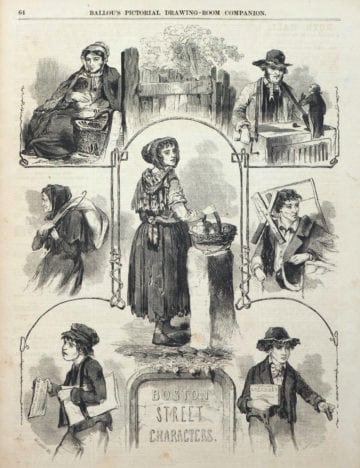
“Museums are a way of thinking, museums are a way of interacting, museums are a way of engaging, museums are a way of validating,” Govenar said. “And so that’s where this is going.”
In 2011, a committee led by members of the Stewpot and First Presbyterian Church approached Govenar — a Dallas writer, filmmaker and photographer who specializes in niche cultures — about a new project called Encore Park Dallas. Leading the charge was the Reverend Bruce Buchanan, longtime executive director of the Stewpot, and his wife and fellow staffer, Carol J. Adams, a feminist and animal rights advocate who authored The Sexual Politics of Meat.
Buchanan and Adams were joined by Pat Bywaters, a business consultant whose grandfather was Jerry Bywaters, a formative director of the Dallas Museum of Art. They and others envisioned Encore Park as a multifunctional community space at the intersection of Young Street and Park Avenue. Encore Park is divided into four parts: an amphitheater; a community garden; a hub for social-service partners and the Museum of Street Culture at the 515 Park building; and the restored 508 Park building, where Johnson recorded the final 13 songs of his short career. The committee wanted Govenar, who has extensively documented the blues, to create historical exhibits for 508, linking the itinerant nature of Johnson’s lifestyle to homelessness.
As Govenar learned more about the Stewpot, he saw the opportunity to pitch a version of an idea he had once brainstormed with writer and critic Luc Sante about a museum dedicated to New York’s homeless population. Govenar has a fascination with the marginalized. As a child he lived in Dorchester, a Boston neighborhood in which African and Caribbean people replaced Italian, Irish and Jewish families.
“I’ve spent a lifetime trying to understand people who are different than me and to find meaningful ways for people to interact,” Govenar said. “I still believe change is possible.”
Govenar anticipated the rapid gentrification near the Stewpot and considered the museum a way to bridge both sides of the street. Seven years later, though, Encore Park is only halfway to realization. According to Bywaters, executive director of the nonprofit Encore Park Dallas, only $10 million of the targeted $20 million has been raised, mostly from foundations. If all goes according to plan, it’ll be at least another two or three years, Bywaters said, before the Museum of Street Culture and others can move into the 515 Park building.
“The street is a great equalizer. It’s where the haves and the have-nots are side by side. And we want, with this museum, to emphasize our shared human experience.”
Govenar has decided to start anyway. In addition to the docent program, he is building a collection of artifacts documenting a wide range of homeless experiences. These pieces will speak less about the condition of homelessness and more about its history. They will destigmatize the archetypal “filthy beggar” and emphasize the humanity of homeless people. Among the pieces is a hand-colored “visiting card” from 1864 by the photographer John P. Soule, depicting a widow and an orphan, with the word “HOMELESS” printed on it. This is the first known use of the term in artwork, according to Govenar.
Into the early 1900s, numerous pieces celebrate homelessness as a chosen path. These include iron-on transfers of hobos carrying their bindles, periodicals featuring a recurring character called Tony the Tramp, and issues of Hobo News, a paper for homeless migrant workers that was started by James Eads How, dubbed the “Millionaire Hobo” because he abandoned his fortune for street life. Among the collection’s highlights are Swiss Army-like, all-in-one utensils called hobo knives. Until the museum has a home, Govenar will rely on partners like the Nasher Sculpture Center, where the Museum of Street Culture has hosted a dialogue series, for exhibit space.
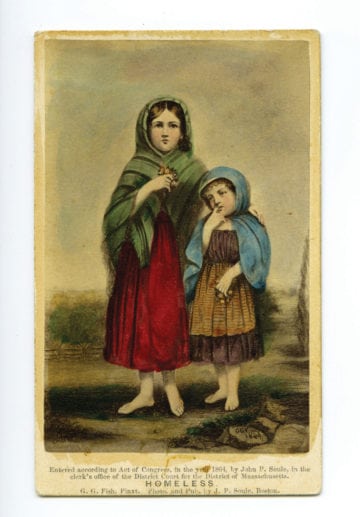
“Making art available for everyone means having beautiful buildings that house great collections and present great exhibitions that people can visit,” said Jeremy Strick, director of the Nasher Sculpture Center, “but it also means thinking about ways to take that out of the museum and into the community.”
Dallas’ progress on homelessness has been slow and uneven. For decades the city has struggled with large homeless encampments, which officials repeatedly shut down, only to have another “tent city” pop up somewhere else. The annual homelessness census released in March indicated that the number of homeless people in Dallas and Collin counties has increased 9 percent from 2017, up from 3,789 to 4,140. These numbers reflect a national trend, but Dallas Mayor Mike Rawlings says that’s not an excuse. Rawlings is a proponent of the National Alliance to End Homelessness’ “Housing First” approach, which posits that providing permanent housing is the logical first step.
“We don’t have a political sense of urgency to get this done,” Rawlings said. “It’s a very challenging issue politically. There are other priorities that people fight over for that money before homelessness. [The homeless are] usually the last to get their piece of the pie.”
As the city’s former “homeless czar” under mayor Laura Miller, Rawlings has a deep understanding of the issue. He helped build the Bridge, a homeless recovery center where more than 1,000 meals are served seven days per week. He says homelessness must be met with solutions that include more than just a meal and a bed.
“These are human beings with faith needs, with creative aspirations, and when they start to get up Maslow’s hierarchy of needs, they become better, they become more independent individuals,” Rawlings said.

That’s a belief shared by Misty. As we exited the Stewpot and continued our tour outside, the homeless folks I’d seen before were still lined up waiting for services.
Misty kept asking me to close my eyes and enter the photographs. She was determined to personalize the experience. She led me to the end of the block, away from the exhibit and the people. She demanded I take a photo to remember the experience and share it with my daughter.
“It starts in a family,” Misty said. “If a parent doesn’t fulfill that duty of being a parent, the kids are going to start looking for answers at the wrong place, and this is what happens. … Everything starts at home.”
Top photo by Danny Fulgencio.


